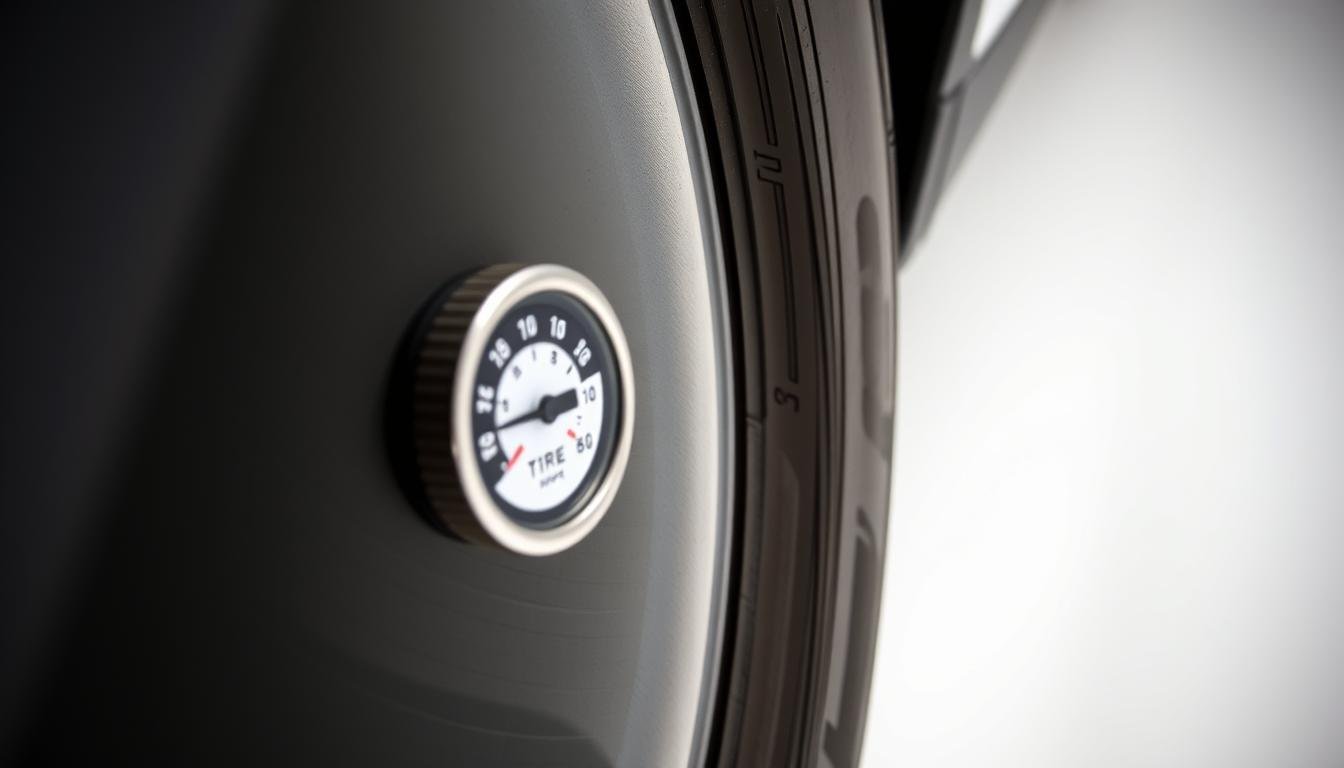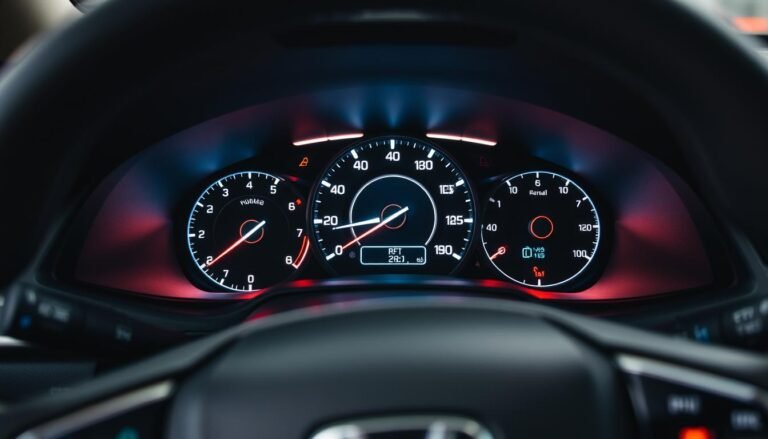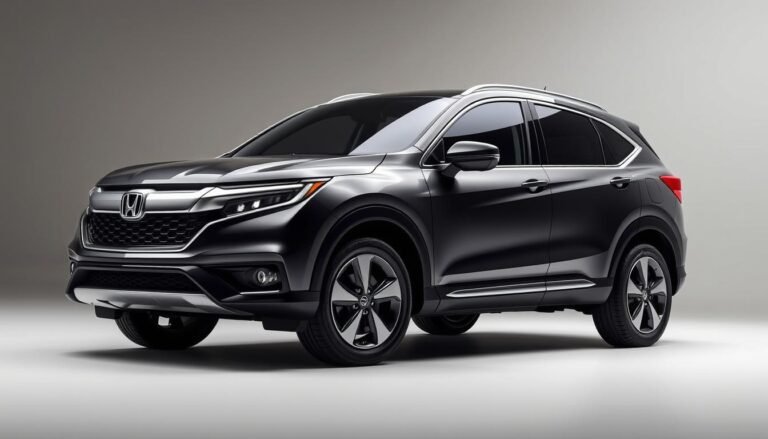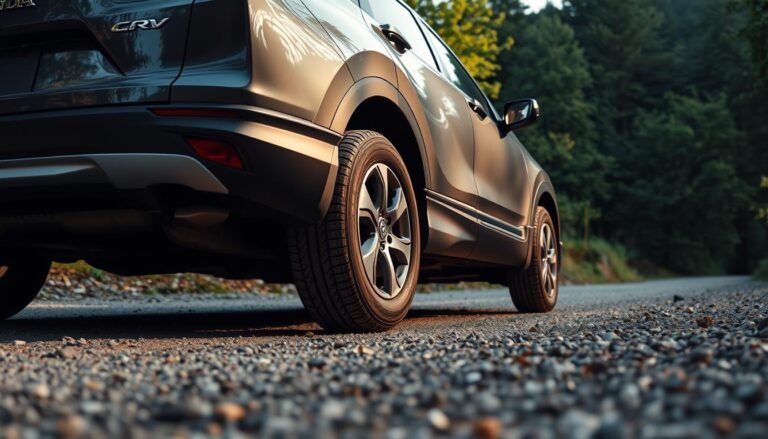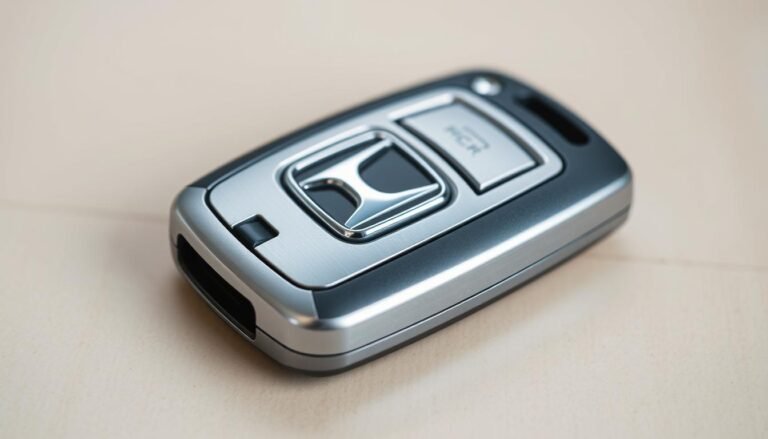Honda Pilot Tire Pressure Guide & Tips
Knowing the right tire pressure for your Honda Pilot is key to its best performance and safety.
Keeping the perfect tire pressure improves your drive, saves gas, and extends tire life. Let’s look at how to keep tire pressure right for your Honda Pilot.
First, learn the recommended tire pressure for your car. Then, check the tire pressure often.
We’ll teach you how to check your Honda Pilot’s tire pressure correctly, what monitoring tools your car has, and signs that your tires need air.
With these helpful tips, you can maintain the right tire pressure. This boosts both safety and how well your car drives. Let’s explore how to handle tire pressure for your Honda Pilot.
What is Honda Pilot Tire Specifications?
The Honda Pilot comes in different models, each needing certain tire sizes to work best. Knowing the honda pilot tire specifications helps keep your car running well and safely.
The recommended tire sizes are important for improving handling, saving gas, and making driving better overall.
| Model Year | Tire Size |
|---|---|
| 2016-2020 | 245/60R18 |
| 2021-2022 | 245/50R20 |
| 2023 | 245/50R20 |
These recommended sizes are key to your car’s performance. Wrong tire sizes can harm handling and decrease gas mileage.
Always check your vehicle’s manual for the right tire sizes before getting service or upgrades. This ensures your car remains safe and performs well.
Recommended Tire Pressure For Honda Pilot
For the best performance, keep the Honda Pilot’s tire pressure at:
| Tire Position | Recommended Pressure (PSI) |
|---|---|
| Front Tires | 35 PSI (240 kPa) |
| Rear Tires | 35 PSI (240 kPa) |
Keeping this pressure ideal is key for a smooth ride and long-lasting tires. It’s important to regularly check your tire pressure.
Minor changes in pressure can greatly impact how your car drives and its gas mileage. Always check the pressure when your tires are cold for the best measure.
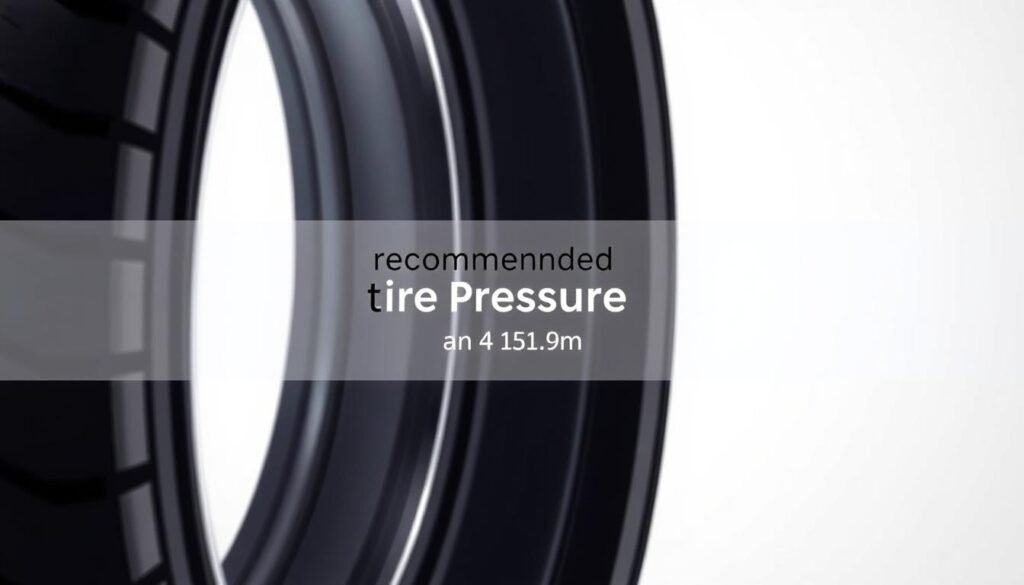
How To Check Tire Pressure on Honda Pilot?
Checking your Honda Pilot’s tire pressure is easy and should be done often. Do it every month or before long drives. This will make sure your tires have the right amount of air.
- Locate the Tire Pressure Information: Look for a sticker on the driver’s side door frame or check your owner’s manual. It tells you the right PSI (air pressure) for your tires.
- Use a Reliable Tire Pressure Gauge: Check the air pressure in all tires, including the spare, with a good gauge. Write down what you find.
- Inflate or Deflate: If the pressure is too low, add air with an air pump until it’s right. If it’s too high, let some air out until it matches the recommended PSI.
Always check your tire pressure when the tires are cold for the most accurate results. By doing these steps, you’ll know how to keep the tire pressure in check on your Honda Pilot.
Keeping the right tire pressure matters a lot for safety, saving fuel, and making your tires last longer. By checking and adjusting it as needed, your drive gets better and safer.
Honda Pilot Tire Pressure Monitoring System
The Honda Pilot’s tire pressure monitoring system (TPMS) is key to keeping you safe on the road. It lets you know when your tire pressure is too low.
This is crucial for the best driving experience and to avoid accidents because of low tire pressure.
The TPMS helps by providing warnings visually and with sound when your tires need air. These alerts help you adjust your tire pressure precisely.
You can find how much air to put in on the driver’s door jamb label, making it easy for you. Using the Honda Pilot’s tire pressure monitoring system regularly is crucial.
It ensures safe driving and stops your tires from getting too hot due to low air. Keeping the correct tire pressure improves your drive and makes your tires last longer.
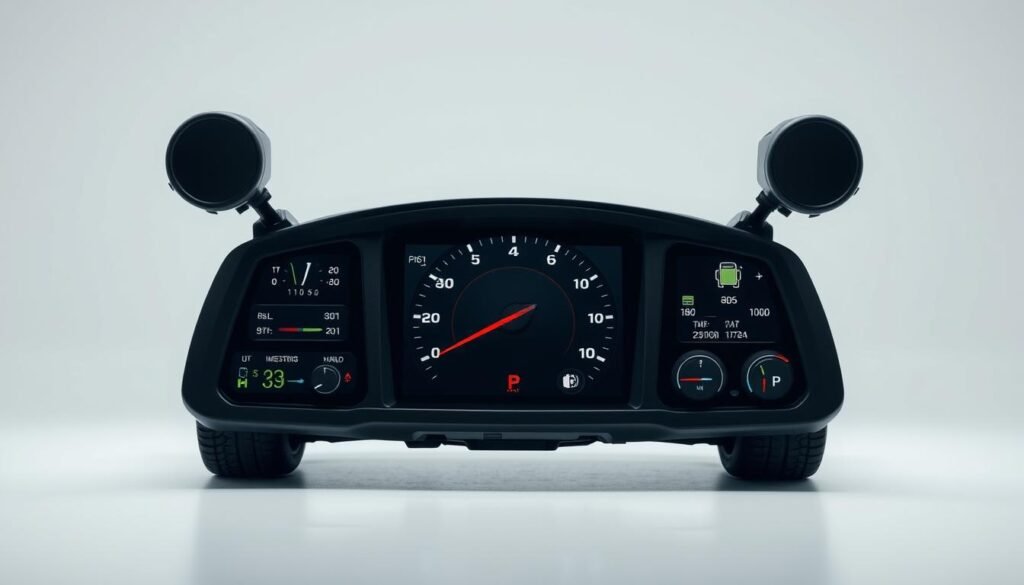
Signs of Improper Tire Pressure
Knowing when your tire pressure isn’t right is crucial for safety and can also help your tires last longer. Look out for several signs to see if your tires need more or less air.
Some of these signs include:
- Uneven Wear: Tires with too little air wear down more in the middle. Tires with too much air show wear along the edges.
- Decreased Fuel Efficiency: The wrong tire pressure can make your car use more fuel. This means you’ll spend more money on gas than you need to.
- Compromised Handling: If your tires don’t have enough air, your car might not steer well. Too much air leads to a rough ride.
- Increased Risk of Failure: Tires that are either too full or not full enough can easily blow out. This is why checking your tires often is important.
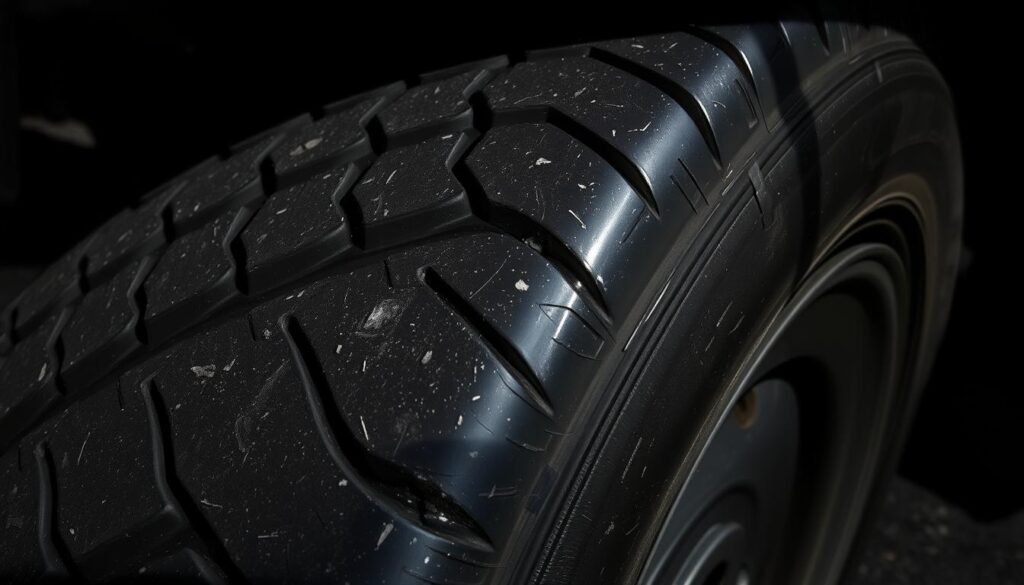
Honda Pilot Tire Pressure Light: What It Means?
When the honda pilot tire pressure light turns on, it’s telling you to check your tires. It means one or more tires might be too low on air. Driving like this is not safe or efficient.
You should pull over and check the air in your tires right away. If your tires need air, fill them up according to the car maker’s recommendations.
After you add air, keep an eye on your tires. If the tire pressure light doesn’t go off, there might be a problem with your car’s tire pressure monitoring system.
You should have it checked out soon. A broken TPMS might not warn you about low tire air levels. This could make driving dangerous.
So, it’s very important to make sure your Honda Pilot’s tire pressure light is working right.
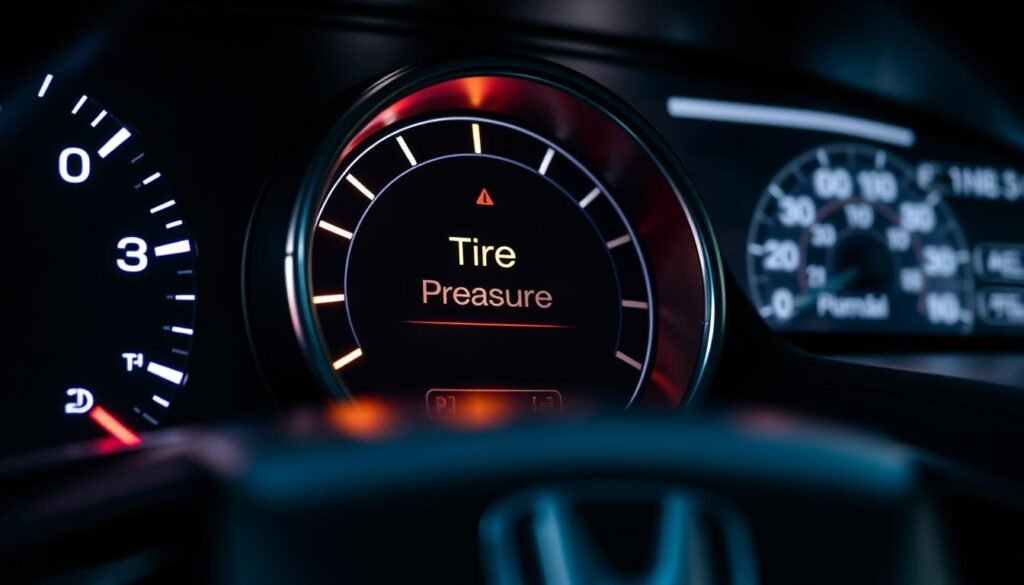
- Check tire pressure immediately.
- Inflate tires to the correct levels.
- If the light stays on, inspect the TPMS for potential malfunctions.
Tire Pressure Adjustments For Seasonal Changes
Adjusting your tire pressure with the seasons is key for the best driving. In places where temperatures change a lot, your tire pressure could go up or down.
This change affects how your car drives. When it’s cold in winter, your tire pressure goes down. To fix this, you might need to add about 2 PSI.
In the summer, when it gets hotter, your tires could get too full. It’s important to check and adjust the pressure to avoid tire blowouts. This also helps your tires last longer.
Knowing how much pressure winter and summer tires need is important. This is because each type of tire is different and needs specific care.
Looking at advised tire pressures for each season can be useful:
| Season | Recommended Pressure (PSI) | Notes |
|---|---|---|
| Winter | 32-34 | Increase by 2 PSI to counteract cold temperature effects. |
| Summer | 30-32 | Check regularly due to potential expansion. |
Tips For Maintaining Proper Honda Pilot Tire Pressure
Keeping the right tire pressure in your Honda Pilot is crucial for top performance and safety.
By checking your tires often, you avoid problems that cause them to wear out too soon or create safety risks.
Make these tips a key part of keeping your vehicle in good shape:
- Routine Checks: Inspect tire pressure monthly to ensure it aligns with manufacturer recommendations.
- Rotation: Rotate tires every 8,000-12,000 kilometers. This practice promotes even wear and longevity.
- Alignment and Balancing: Ensure proper alignment and balance to prevent uneven tire wear, which can compromise vehicle handling.
- Damage Inspection: Regularly check for visible damage such as cracks or bulges. Address any abnormalities promptly.
- Avoid Overloading: Do not exceed manufacturer-recommended load limits as this places undue stress on tires, affecting their integrity and lifespan.
By following these tips, you’ll not only be safer on the road but you’ll also keep your tires in great condition.
This means avoiding the high costs that come with having to replace your tires too early. Remember, checking tire pressure regularly is a must for taking care of your vehicle.
Honda Pilot Tire Pressure Sensor Functions and Calibration
The Honda Pilot’s tire pressure sensors are key for your car’s safety and how well it drives. They keep track of how much air is in your tires and tell your car’s computer.
This helps you stay safe on the road by avoiding tire problems. When you get new tires or wheels, you need to calibrate the TPMS.
This makes sure the system’s tire pressure readings are right. Without calibration, you might not get warned about low tire pressure.
And that warning is crucial for keeping a good grip on the road and controlling your car safely.
| Aspect | Importance | Recommendations |
|---|---|---|
| Sensor Functions | Monitors and relays tire pressure data | Regularly verify sensor accuracy during maintenance |
| TPMS Calibration | Ensures data accuracy after tire changes | Recalibrate after any tire replacement |
| Sensor Accuracy | Critical for safety and handling | Check batteries and sensors for wear regularly |
Keeping your sensor’s accuracy in check is crucial for the tire pressure system in your Honda Pilot.
Knowing how important these sensors are can prevent expensive repairs. It also makes your drives better.
Comparing OEM vs. Aftermarket Tires For Honda Pilot
Choosing tires for your Honda Pilot means deciding between OEM and aftermarket options. OEM tires are made just for your Honda Pilot.
They fit perfectly and meet high standards for safety and performance. Aftermarket tires offer a range of choices, possibly at lower prices or with different benefits.
They might improve grip or last longer. But it’s important they match Honda’s guidelines. Wrong tires can change how your car handles and feels, and affect safety.
To pick wisely, think about:
- Driving Habits: Look at your most common driving patterns.
- Budget: Set a spending limit and check options within it.
- Features: Decide if you want extras like better gas mileage or ability to drive off-road.
Talking to a mechanic or Honda dealer can help. They’ll offer advice tailored to how you drive, helping you compare OEM and aftermarket tires.
Conclusion
Managing the tire pressure of your Honda Pilot is crucial for top-notch performance, safety, and saving fuel.
Making sure your tires are filled right improves how your car drives and keeps you safe.
It’s vital to regularly check your tire pressure and keep an eye on the TPMS to catch any problems early.
Adjusting your tire pressure for the changing seasons helps make driving smoother. Regular car upkeep, like checking your tires, makes them last longer and boosts your drive.
By focusing on these steps, your Honda Pilot will stay in great shape, offering you a comfy and reliable journey.
Being ahead of the game with tire pressure management boosts your car’s efficiency and safety.
Make checking your tires a routine and drive confidently, knowing you’re well-prepared.
FAQs
Q: What is the recommended tire pressure for a 2016-2023 Honda Pilot?
A: The right tire pressure for both front and back tires is 35 PSI (240 kPa).
Q: How do I reset the tire pressure monitoring system (TPMS) on my Honda Pilot?
A: To reset the TPMS, turn the ignition on without starting the car. Press and hold the TPMS reset button. Wait until the TPMS light blinks three times, then let go of the button.
Q: How often should I check the tire pressure on my Honda Pilot?
A: You should check the tire pressure every month or before long road trips. This ensures your car performs well and is safe.
Q: What should I do if the tire pressure light on my Honda Pilot comes on?
A: If the tire pressure light turns on, safely stop the car. Then, check and adjust the pressure of each tire to the suggested level if needed.
Q: Where can I find the tire pressure information for my Honda Pilot?
A: You can find tire pressure details inside the driver’s side door jamb or in the car’s manual.
Q: What happens if I don’t maintain proper tire pressure?
A: Without the right tire pressure, your tires can wear down unevenly. Your car might use more fuel, handle poorly, and the tires could fail earlier.
Q: How do I know if my TPMS sensor is malfunctioning?
A: If the TPMS light stays on after adjusting the tires’ pressure, it might mean there’s a malfunction. In this case, have the system checked out.

